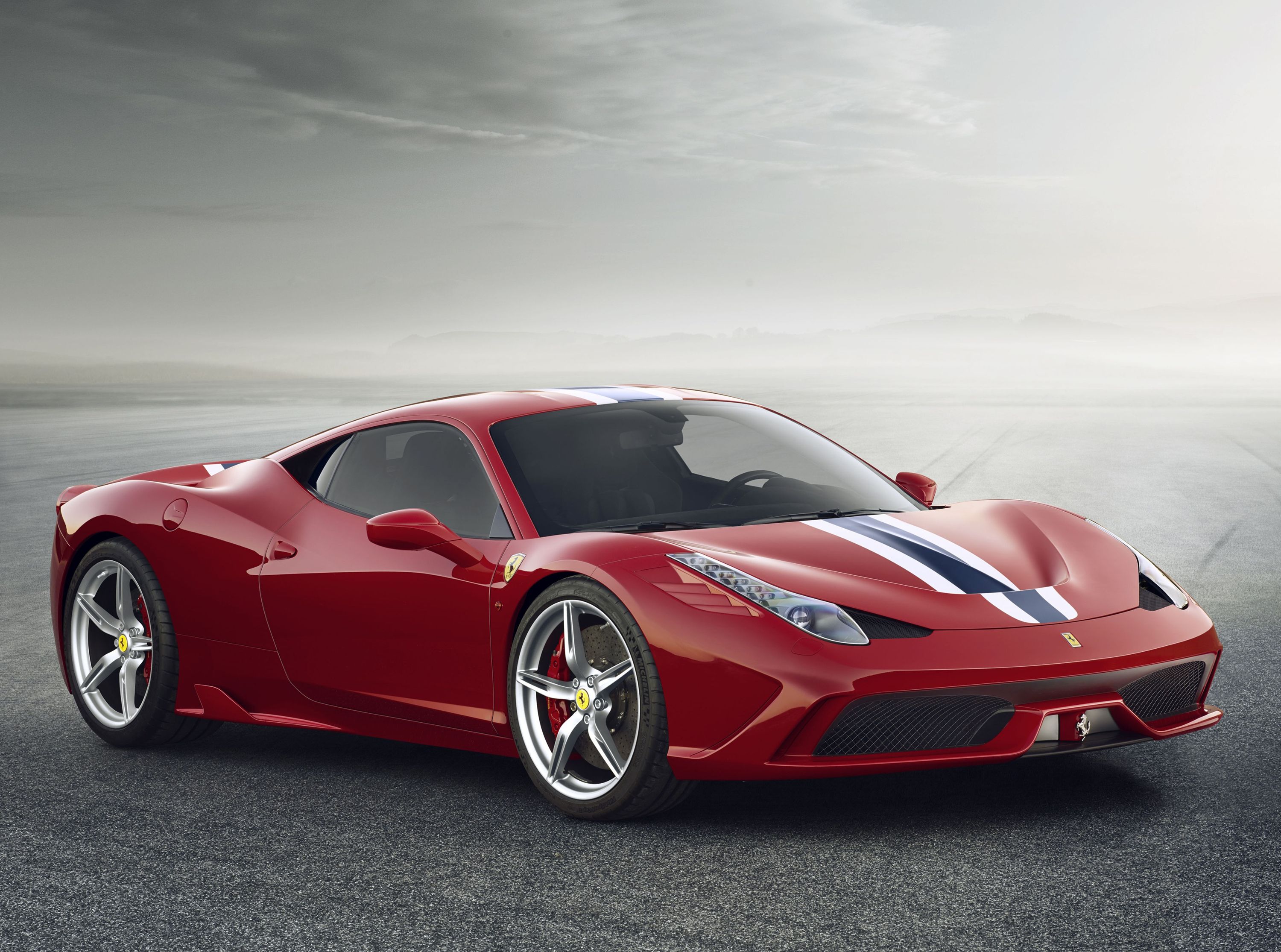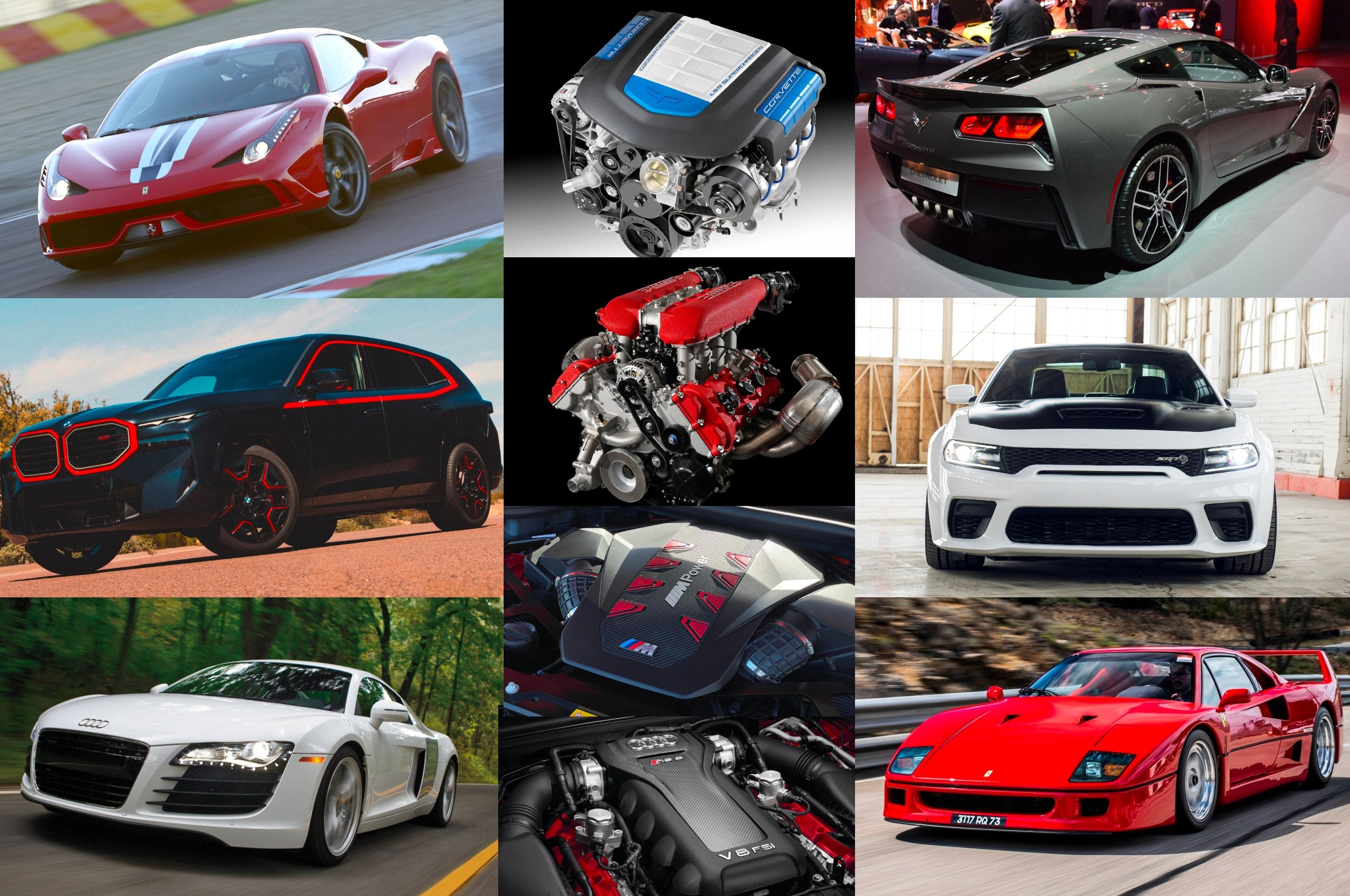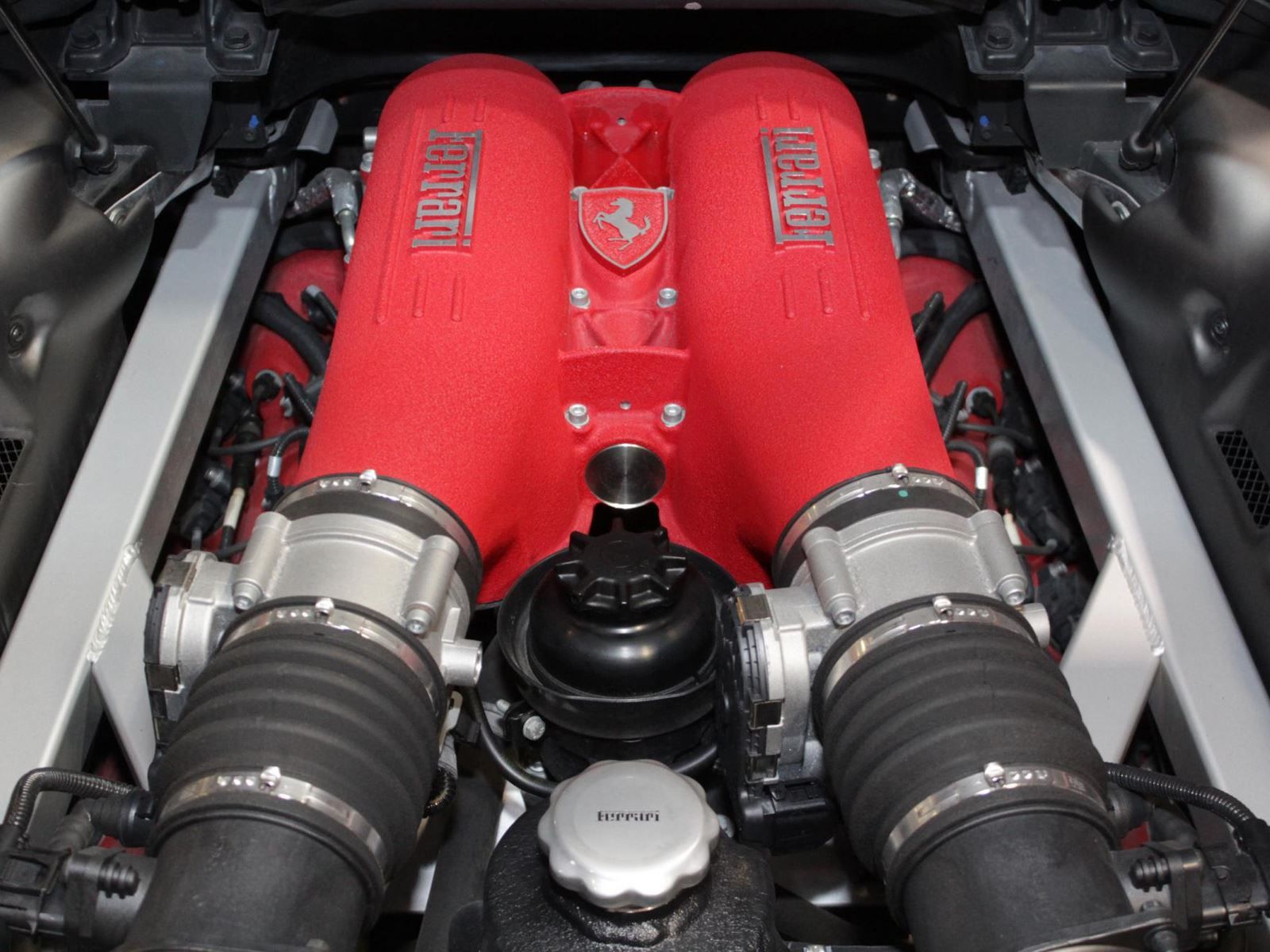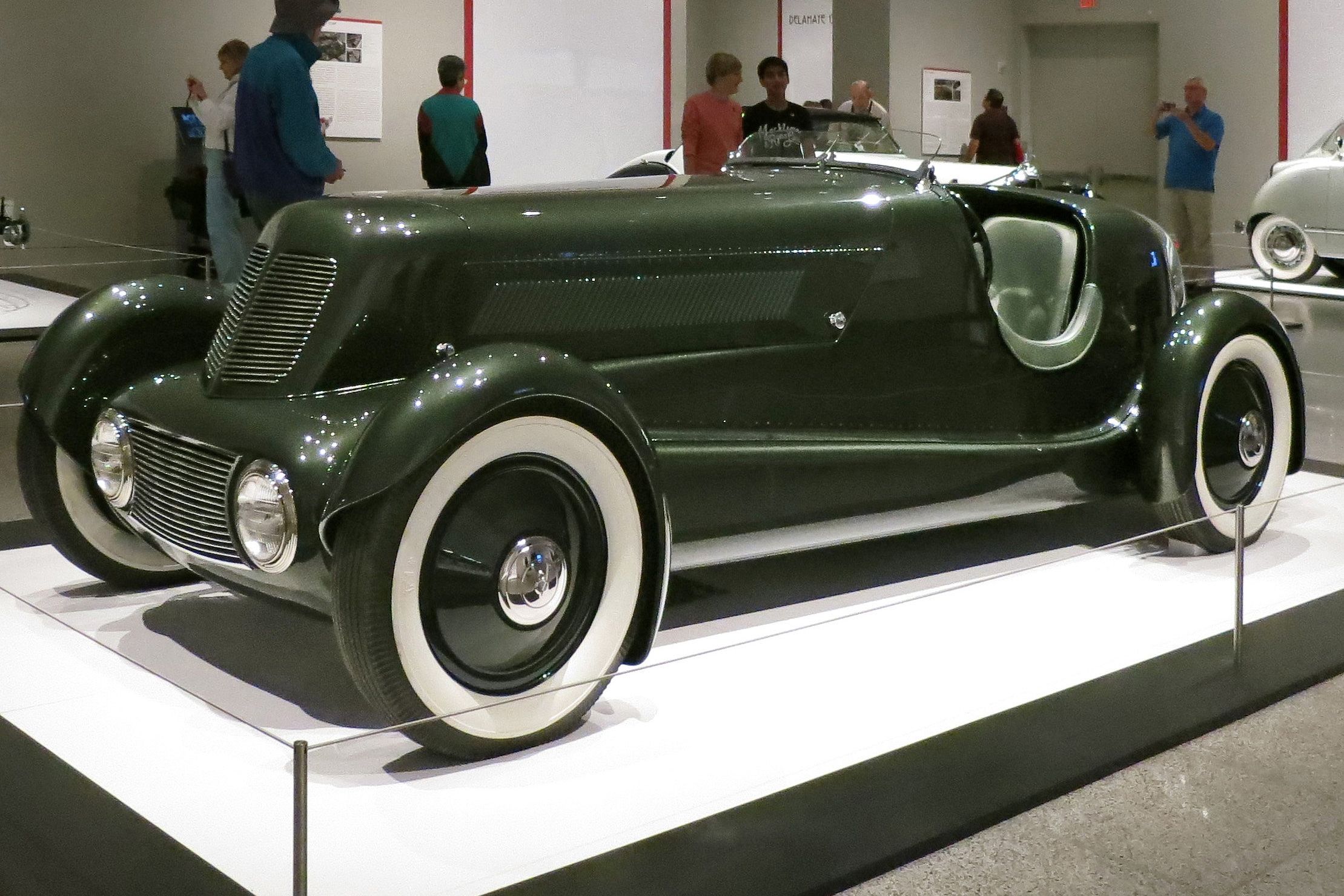
What is this obsession that Americans have with the V8? Straight-sixes and V12s are smoother, four-cylinder motors offer better economy, and an inline-five or V10 can sound superb.
It may have taken a few false starts to get going, but by 1915 Cadillac had started mass-producing its first V8, a 5.4-liter 70-hp unit that powered its early cars to an impressive 65 mph. Oldsmobile, Chevrolet, and Ford followed suit, and by the late '30s, this engine configuration had truly taken off.
Part of their appeal was that the basic layout allowed for a lot of flexibility.
This list was originally published in 2018 but was updated in 2023 with new and relevant information.
Engineers could choose a flat-plane crank for more power or a cross-plane crank for additional torque. The battle between flat-plane and cross-plane will rage on for ages.
The compact V layout meant it could fit into the space of a four-cylinder engine bay, and it was shorter than six or 12-cylinder designs.
Most V8s were fitted to more aspirational cars, but Henry Ford's flathead V8 became one of the first to be equipped to more accessible vehicles. Engine technology has moved on significantly since those early days, and today's V8s have overhead camshafts, direct injection, variable valve control, turbochargers, and in some cases, electrical assistance.
Whatever the case may be, here's a list of vehicles with V8 engines where the powertrain is the star of the show.
Ford Flathead
But let's start with that flathead V8 motor that Henry Ford introduced to the world in 1932.
Its advanced crankshaft design, high-pressure oil lubrication, and one-piece block were pretty revolutionary for the time. The low price point was an additional draw card, and variations of this engine powered countless Fords well into the '50s.
Hot rodders also loved the Flathead V8, as it could be run on a shoestring budget, and it dominated the modifying scene until the more efficient OHV V8s started to arrive.
The flathead made the Model 18 range some of the best old V8 cars, while the hot-rodding scene ensured that it remains one of the most iconic V8 engines ever produced.
Rover V8
The V8 may have been invented by a Frenchman and used in a Rolls-Royce before American entrepreneurs got their act together, but once they did, they made it their own. The impact was even felt across the pond.
One of the finest European examples is the Rover V8, the most British of all V8s. It was built in the UK from 1960 until 2006 and found its way into several cars with V8 engines, from TVRs to Land Rovers and even limited-production Morgans.
Most people don't know that the design began life as the Buick 215. It was an all-aluminum unit and fitted to the Oldsmobile Jetfire, the world's first turbocharged engine.
Chevy Small-Block V8
The Chevy small-block V8 started life in 1955, fitted to the first-generation Corvettes.
It was stuffed into countless other models in capacities ranging from 4.3 up to 6.6 liters. The small-block design lasted until 2003, with the Gen II small-block arriving in 1992. These versatile engines could produce up to 390 horsepower in standard form. They are still available to order as 'crate motors' and are a favorite among tuners looking for reliable horsepower.
The all-new LS V8s were introduced in 1996, which is the engine line that powers current GM vehicles. The latest Gen V units feature direct injection, active fuel management, and variable valve timing.
HEMI V8s
The Chrysler Hemi engines have become synonymous with power and performance since they first hit the scene in 1951. Some regard it as the best American V8 engine of all time.
The nickname 'Hemi' was derived from these engines having hemispherical combustion chambers. The design was not unique to Chrysler, nor was it necessarily a superior way to extract more power from an engine. Still, most Hemis were large-capacity motors that made plenty of power.
There have been some genuinely iconic Hemi V8s. The first was the 426 Hemi fitted to the 1970 Plymouth Barracuda and, most recently, the 707-hp supercharged 6.2-liter V8 fitted to the Dodge Charger Hellcat and even madder 840-hp Challenger SRT Demon.
Unfortunately, the Stellantis Group is now done with V8s, but only after one final swansong...
Demon 170 V8
When talking about the best V8 engines ever, you simply have to include Dodge's final love letter to the engine. The allure to include the 1,100 hp Hellephant crate engine was big, but in the end, the Demon won out.
The Dodge Challenger SRT Demon 170 is all about the numbers. It's the last hurrah before Dodge kills all V8 engines, and it's not going down without a fight. The supercharged 6.2-liter V8 produces 1,025 hp and 945 lb-ft of torque. It does 0-60 mph in 1.66 seconds and completes the quarter-mile in 8.91 seconds at 151.17 mph.
To cope with the additional power, Dodge had to make some substantial upgrades. During the development phase, this car kept on blowing engines, so it wasn't the most reliable V8 engine, to begin with. That's why it has a lot in common with the uprated Hellephant crate engine, which is where the Demon's name comes from. The internal code for the Hellephant is C170.
Dodge is only building 3,000, so it's bound to become a collector's item.
Ferrari F106
The Ferrari F106 V8 was first used in the awkwardly proportioned (and named) Dino 308 GT4 2+2 back in 1973. It made a powerful 250 hp from 2.9 liters and, unlike the overhead-valve pushrod designs that dominated the American scene, used a flat-plane crank and had dual-overhead camshafts.
This layout was the basis for every mid-engined Ferrari V8 until the 360, which ceased production in 2005. It saw duty in the 308, F355, and twin-turbocharged F40. Multivalve heads and electronic fuel injection were introduced over the years, helping power outputs grow to 400 hp in unboosted form and 477 hp when fitted with turbos.
Maserati/Ferrari F136
The F136 debuted in the 483-hp 4.3-liter F430 in 2004, it peaked in the 458 Speciale, causing a massive 597 hp from just 4.5 liters.
The Maserati Quattroporte and GranTurismo models also received a modified cross-plane crank version of this motor, best known for having one of the most captivating exhaust notes ever.
The 454-hp 4.7-liter Maserati GranTurismo was the best sounding of the lot. The Ferrari 488GTB replaced the 458 in 2015 and brought a new turbocharged F154 V8, signaling the end of the naturally aspirated Ferrari V8. These days Ferrari's V8s are turbocharged and electrified.
Audi FSI V8
Audi has been pushing turbocharged motors on us for decades, so it was a bit of a surprise when their BMW M3-rivaling B7 generation RS4 came equipped with a high-revving 420-hp 4.2-liter V8.
It was even more surprising to find a dry-sump lubricated variant in their mid-engined R8 sports car. It proved to be a competent power unit, featuring stratified fuel injection for the first time on a production car and able to rev to 8,250 rpm, and it also made all the right noises. If you ask us, this and the Ferrari engine mentioned above are the best V8 engines of all time.
The naturally aspirated V8 was last used in the previous generation 444-hp RS5. Audi has returned to turbocharging its V8s, and the latest versions develop more than 600 horses. Audi is done with pure internal combustion, and all models introduced after 2026 will include some form of electrification.
BMW 4.4-Liter Twin-Turbo V8
BMW has been fitting V8s to their luxury models for many decades, and two of the best have been the S65 414-hp 4.0-liter unit in the old E90 M3 and the S62 400-hp 4.9-liter engine fitted to the late-'90s M5.
These marked the pinnacle of non-turbo V8 development at BMW, but the latest 4.4-liter twin-turbo V8 is a modern masterpiece. In standard form, it produces more than 600 hp and provides the latest generation M5 with the firepower to take on supercars. It's so fierce BMW had to include four-wheel-drive as standard.
In 2022, BMW introduced an all-new halo M car, which is equipped with the 4.4-liter twin-turbo V8, but works in tandem with a plug-in hybrid system. The XM Label Red's PHEV powertrain is a technological masterpiece, producing 738 horsepower and 738 lb-ft of torque. In fact, it's the most potent BMW M model ever.
Mercedes-AMG 6.2 V8
Mercedes has also gone turbocharging with the magnificent 4.0-liter V8, which we also count as one of the best V8s ever made simply because it's so adaptable.
However, we still love the M156 6.2-liter V8 that initially powered the 467-hp C63 AMG. It featured a whole host of performance upgrades compared to the rest of the Mercedes range and powered just about every range-topping AMG model from the CL63 AMG right up to the SL63 roadster.
The ultimate version of this motor was dubbed the M159 and was used in the SLS supercar. It was Merc's last naturally aspirated supercar, and the GT that followed used the 4.0 mentioned previously. Any car equipped with these two engines is bound to become a collector's item, not that AMG's focus has turned to plug-in four cylinders.
McLaren 3.8/4.0 V8
McLaren Automotive opened its doors in 1963, and while it has been extraordinarily successful in motorsport, it wasn't until much later that it turned its focus to road cars.
The game-changing McLaren F1 was first to arrive in 1992, and the Mercedes-McLaren SLR was an exciting collaboration built by McLaren's facility in Woking. The first modern supercar from the British brand was the MP4-12C, and it was stunning. Some people slated it for being boring, but how can a mid-engine machine with a 3.8-liter twin-turbo V8 be described as dull? The first version of the engine produced 592 hp and peaked at a mighty 727 hp in the hybrid P1 hypercar.
In 2017 McLaren introduced the new M840T twin-turbocharged V8 engine, bored out to 4.0 liters. The changes were a little more substantial than that, and the result was 710 hp. This engine was so potent that it allowed the 720S and the more focused 765LT to be faster than the P1 around certain circuits. McLaren isn't done with this V8 yet, but it has since developed an all-new twin-turbo V6 with hybrid assistance.
Lexus 1UZ-FE
While there are many more great V8s out there, we couldn't leave out our sole Japanese entrant.
The 4.0-liter Lexus 1UZ-FE was introduced in 1989, featuring dual overhead camshafts and four valves per cylinder. It was relatively advanced for its time, and its supreme smoothness and bulletproof reliability made it famous over the years. It's common to see an LS400 with a million miles on the clock. When talking reliability, this is one of if not the best V8 engine cars.
Fitted to cars like the luxurious LS400, these engines initially produced 256 hp but made 300 hp with the addition of variable valve timing and other updates in later versions. Like the Chevy small-block motors, these 1UZ-FE motors have found their way into various applications, from powerboats to off-road racers.
Predator V8
The so-called Predator V8 engine entirely dominates the Mustang Shelby GT500. It's a 5.2-liter V8 engine with a 2.65-liter Eaton supercharger bolted on top. The Predator is unrelated to the GT350's V8, even though they share an engine size. The Predator uses a more traditional cross-plane configuration, giving it that distinct sound of an American V8.
The result is 760 hp and 625 lb-ft of torque, sent through the rear wheels via a seven-speed dual-clutch transmission. Thanks to launch control, the GT500 can get to 60 mph in 3.3 seconds. If you don't want to use launch control, you can smoke the rear tires at will. That colossal torque figure is produced low down, so all you need is a quarter throttle to light up the rears.
Ford adapted the Predator for use in the Raptor R. The pulley for the supercharger is slightly smaller, and it has cast stainless steel exhaust manifolds. It also has a much longer exhaust system compared to the GT500, which also robs it of some power. It's not all bad, as the Raptor R still has 700 horses and 640 lb-ft to play with.
Chevrolet 5.5 NA Flat-Plane V8
There's an excellent case to be made for this being the best V8 engine currently on sale. The LT6 results from Chevrolet reverse engineering the beloved Ferrari 458's naturally aspirated flat-plane V8 and improving it as necessary.
This NA engine produces 670 hp and 460 lb-ft of torque, but there are more impressive figures. Peak power is only reached at 8,400 rpm, just 200 rpm before the red line. Chevrolet also overshot a little because the 458's 4.5-liter engine only produced 570 hp and 398 lb-ft of torque. Still, it is a much older car.
What we love most about this engine is that it goes against the current norm, which is to bolt a turbocharger to the engine to get a crazy amount of power you don't really need.
To us, a great engine responds instantaneously, provides power progressively, and emits a beautiful howl while doing so.



